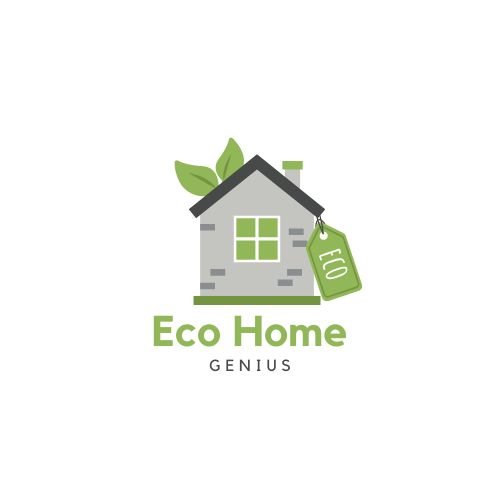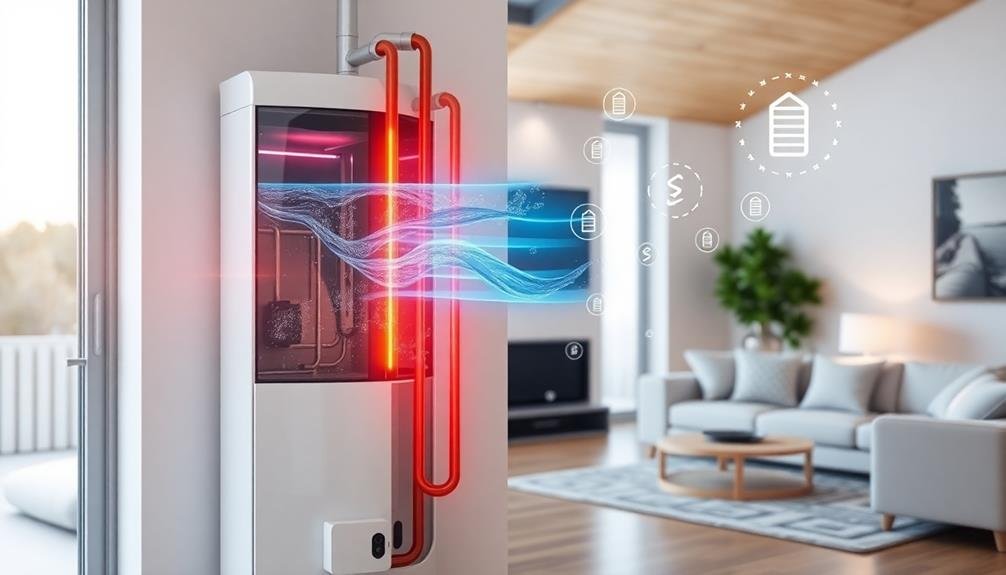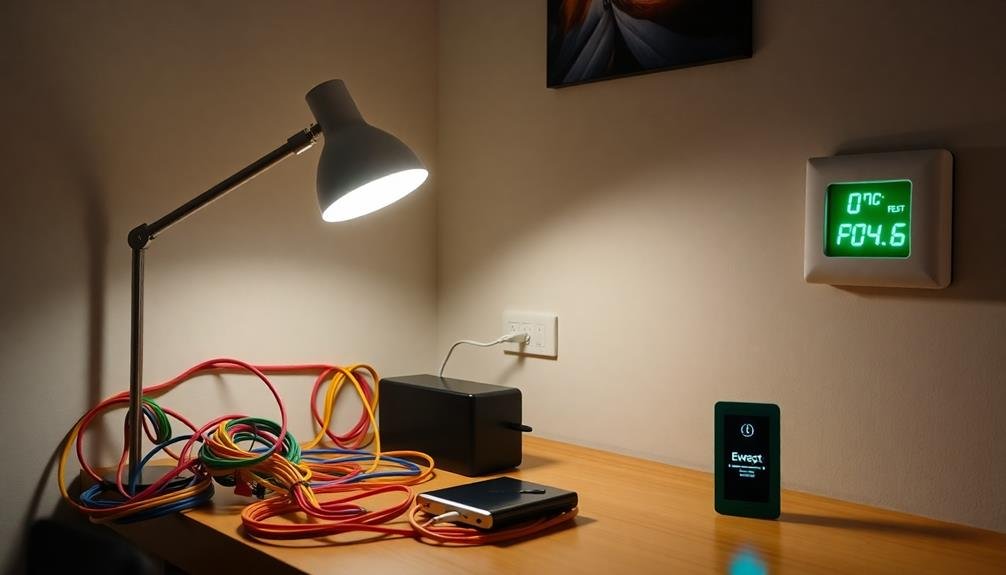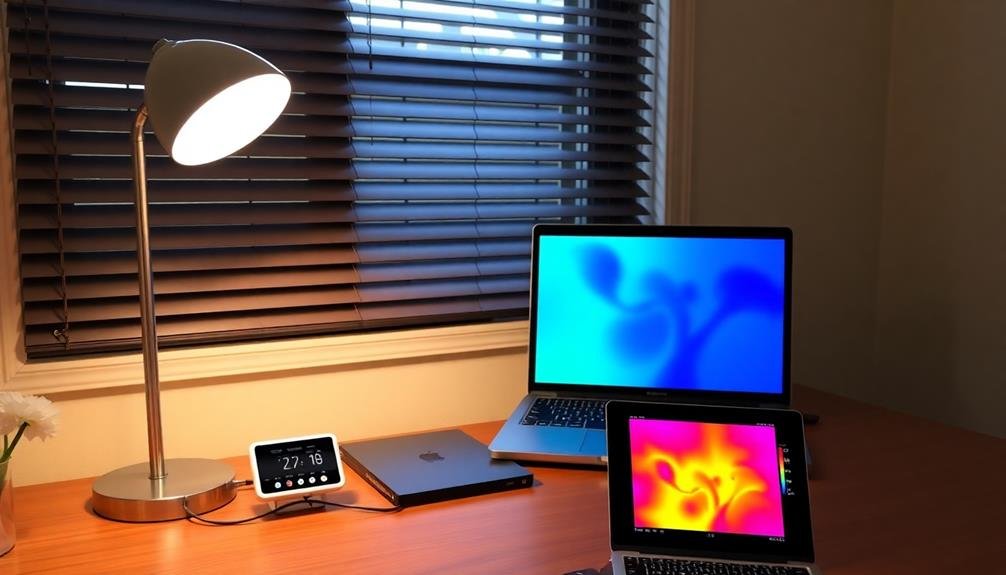Merging air and water heating technologies offers you a host of benefits. You'll see significant energy savings, reduced utility bills, and a smaller carbon footprint. The integrated system takes up less space, simplifying installation and maintenance. It provides year-round comfort, seamlessly shifting between heating and cooling as needed. You'll enjoy improved performance with faster warm-up times and better temperature control. The technology adapts well to various climate zones and integrates easily with existing systems. As the future of home heating evolves, these combined systems are at the forefront of efficiency and sustainability. Discover how this innovative approach can transform your home's comfort and energy use.
Energy Efficiency Benefits

Three key energy efficiency benefits arise from merging air and water heating technologies.
First, you'll greatly reduce energy waste by utilizing a single heat source for both air and water heating needs. This integrated approach eliminates redundancies in separate systems, allowing you to maximize the efficiency of your energy consumption.
Second, you'll benefit from improved heat transfer and distribution. Merged systems often use advanced heat exchanger technologies, enabling more effective transfer of thermal energy between air and water. This results in faster heating times and more consistent temperatures throughout your home or building.
Lastly, you'll enjoy enhanced control over your heating systems. Modern merged technologies often incorporate smart controls and sensors, allowing you to fine-tune your heating preferences and adjust settings based on real-time data.
This level of control helps you optimize energy use and reduce unnecessary heating when spaces are unoccupied or during off-peak hours.
Cost Savings Potential
While the energy efficiency benefits of merged air and water heating systems are significant, the cost savings potential is equally compelling. You'll find that combining these technologies can lead to substantial reductions in your utility bills. By using a single system to heat both air and water, you're eliminating the need for separate equipment, which translates to lower upfront costs and reduced maintenance expenses.
The cost savings potential of merged air and water heating systems extends beyond initial investments:
- Lower energy bills: You'll consume less energy overall, resulting in noticeable savings on your monthly utility costs.
- Reduced maintenance costs: With fewer components to service, you'll spend less on routine maintenance and repairs.
- Extended equipment lifespan: The integrated system often experiences less wear and tear, potentially lasting longer than separate units.
You'll also benefit from space savings, as merged systems typically have a smaller footprint than two separate units. This can be particularly advantageous if you're working with limited space in your home or building.
Additionally, some regions offer incentives or rebates for installing energy-efficient systems, further enhancing your cost savings potential when opting for merged air and water heating technologies.
Space-Saving Design Advantages

How can merged air and water heating technologies benefit your living space? By combining these systems, you'll enjoy significant space-saving advantages in your home or building. Traditional separate heating systems often require multiple units, taking up valuable floor space and creating clutter. With a merged system, you'll have a single, compact unit that handles both air and water heating needs.
This space-efficient design allows you to reclaim areas previously occupied by bulky equipment. You'll have more flexibility in layout and design, potentially freeing up closet space or reducing mechanical room size. The streamlined appearance of a merged system can also enhance your home's aesthetic appeal.
Here's a breakdown of space-saving benefits:
| Feature | Separate Systems | Merged System |
|---|---|---|
| Footprint | Large | Compact |
| Installation | Multiple locations | Single point |
| Mechanical room | Larger required | Smaller possible |
You'll appreciate the reduced equipment footprint, simplified installation, and potential for a smaller mechanical room. These space-saving advantages make merged air and water heating technologies an attractive option for both new construction and retrofits, especially in urban areas where space is at a premium.
Year-Round Functionality
Throughout the year, merged air and water heating technologies offer unparalleled versatility. You'll enjoy consistent comfort regardless of the season, as these systems seamlessly shift between heating and cooling modes.
In winter, they efficiently heat your home and provide hot water, while in summer, they cool your living spaces and offer domestic hot water.
This year-round functionality translates to significant benefits:
- Cost savings: You'll reduce energy consumption by using a single system for multiple purposes, lowering your utility bills.
- Simplified maintenance: With one system handling multiple tasks, you'll have fewer components to maintain and service.
- Environmental impact: The increased efficiency of merged systems means you'll reduce your carbon footprint.
You'll appreciate the convenience of not having to switch between separate heating and cooling systems as seasons change.
These integrated technologies adapt to your needs automatically, ensuring ideal comfort without any extra effort on your part.
Whether you're dealing with scorching summer heat or frigid winter temperatures, your merged air and water heating system will keep your home comfortable and your water hot.
This constant readiness eliminates the need for seasonal system startups or shutdowns, saving you time and hassle.
Environmental Impact Reduction

By merging air and water heating technologies, you'll greatly reduce your carbon footprint through lower emissions.
You'll consume fewer resources as these integrated systems optimize energy use across multiple functions.
The improved energy efficiency won't only benefit the environment but also lead to substantial cost savings on your utility bills.
Lower Carbon Emissions
Merging air and water heating technologies can greatly cut down on carbon emissions, making a substantial impact on environmental protection efforts. By combining these systems, you'll reduce the need for separate heating units, which often rely on fossil fuels. This integration leads to a more efficient use of energy resources and a significant decrease in your carbon footprint.
When you opt for merged heating technologies, you're choosing a path that supports lower carbon emissions in several ways:
- Reduced energy consumption: Integrated systems use less energy overall, resulting in fewer greenhouse gases released into the atmosphere.
- Improved efficiency: Combined air and water heating technologies often utilize heat pumps or other high-efficiency methods, further decreasing reliance on carbon-intensive energy sources.
- Renewable energy compatibility: These merged systems are typically more compatible with renewable energy sources like solar or geothermal, allowing for even greater reductions in carbon emissions.
Reduced Resource Consumption
Slashing resource consumption is another key benefit of merging air and water heating technologies. You'll greatly reduce the materials needed for manufacturing, installation, and maintenance by combining two separate systems into one. This consolidation means fewer components, less piping, and a smaller overall footprint in your home or building.
You'll also conserve energy resources by eliminating redundancies in heating processes. The merged system can efficiently transfer heat between air and water, maximizing the use of available thermal energy. This optimization leads to less wasted heat and lower overall energy consumption.
Here's a comparison of resource consumption between traditional and merged systems:
| Resource | Traditional Systems | Merged System |
|---|---|---|
| Materials | More components | Fewer components |
| Space | Larger footprint | Compact design |
| Energy | Separate processes | Optimized heat transfer |
| Maintenance | Multiple units | Single unit |
Improved Energy Efficiency
Remarkably improved energy efficiency is a hallmark of merged air and water heating technologies. You'll find that these systems maximize energy utilization by capturing and repurposing waste heat that would otherwise be lost.
By integrating air and water heating into a single unit, you're fundamentally killing two birds with one stone, reducing the overall energy consumption required to maintain comfortable temperatures in your home and provide hot water.
These merged systems offer several key advantages regarding energy efficiency:
- Heat recovery: They capture residual heat from air conditioning processes and use it to warm water, minimizing energy waste.
- Simultaneous operation: You can heat water and cool air concurrently, optimizing energy use during peak demand periods.
- Reduced standby losses: With a combined system, you'll experience fewer heat losses typically associated with separate units.
You'll also benefit from the synergistic effects of this integration. The system can adapt to varying loads more efficiently, balancing the heating and cooling needs of your home.
This flexibility allows for better overall performance and reduced energy consumption, ultimately leading to lower utility bills and a smaller carbon footprint.
Simplified Installation Process
You'll find that merging air and water heating technologies greatly simplifies the installation process.
The reduced labor requirements stem from integrating two systems into one, cutting down on the time and effort needed for setup.
You'll also benefit from streamlined component connections, as fewer separate parts need to be linked together in this unified heating solution.
Reduced Labor Requirements
The simplified installation process of merged air and water heating systems greatly reduces labor requirements.
You'll find that combining these technologies streamlines the entire setup, cutting down on the time and manpower needed for installation. This reduction in labor translates to cost savings for both contractors and homeowners.
By integrating air and water heating into a single unit, you're eliminating the need for separate installations. This means fewer technicians are required on-site, and the overall installation time is greatly shortened.
You'll appreciate the efficiency gains as the process becomes more straightforward and less time-consuming.
Here are three key ways merged systems reduce labor requirements:
- Single-point installation: Only one system needs to be placed and connected, rather than two separate units.
- Simplified piping: With integrated components, there's less piping to install and fewer connections to make.
- Reduced electrical work: A combined system typically requires fewer electrical connections and controls, streamlining the wiring process.
These labor-saving benefits not only make the installation more cost-effective but also minimize disruption to your home or business during the setup process.
Single-System Integration Benefits
Building on the labor-saving advantages, single-system integration offers a host of benefits that simplify the installation process. When you merge air and water heating technologies, you'll find that a single system requires fewer components and connections. This streamlined approach reduces the potential for errors and leaks, making the installation more straightforward and reliable.
You'll appreciate the reduced space requirements, as a combined system typically occupies less room than separate air and water heating units. This compact design is particularly beneficial in tight spaces or when retrofitting existing buildings. Additionally, you'll need fewer penetrations through walls and roofs, minimizing the risk of structural damage and improving energy efficiency.
The integration also simplifies control systems. You'll work with a single interface to manage both air and water heating, reducing complexity and potential compatibility issues. This unified control allows for more efficient operation and easier maintenance.
Lastly, you'll benefit from a more standardized installation process. With fewer variables to take into account, you can develop a more consistent approach, leading to improved quality control and faster completion times across multiple projects.
Streamlined Component Connections
When merging air and water heating technologies, you'll find that streamlined component connections greatly simplify the installation process. You'll encounter fewer separate components to install, reducing the complexity of the overall system. This integration allows for a more compact design, saving valuable space in your home or building.
The streamlined connections between air and water heating elements result in:
- Reduced piping and ductwork requirements
- Fewer potential points of failure or leaks
- Easier access for maintenance and repairs
You'll appreciate the time and cost savings during installation, as fewer connections mean less labor and materials. The simplified system also reduces the likelihood of installation errors, ensuring peak performance from the start.
You'll find that troubleshooting becomes more straightforward, as there are fewer individual components to inspect and maintain.
Moreover, the streamlined design enhances energy efficiency by minimizing heat loss between components. You'll benefit from a more responsive system that can quickly adjust to your heating and cooling needs.
This integration also allows for better control and monitoring of the entire system, providing you with improved comfort and energy management capabilities.
Improved Heating Performance

Combining air and water heating technologies can greatly boost your home's overall heating performance. You'll experience more efficient and consistent heating throughout your living spaces. This merged system leverages the strengths of both air and water heating methods, resulting in faster warm-up times and more even heat distribution.
With this integrated approach, you'll benefit from the quick response of forced air heating and the steady, radiant warmth of hydronic systems. The combined technology allows for better temperature control in different zones of your home, reducing energy waste and improving comfort.
You'll also notice improved humidity management, as the system can better regulate moisture levels in the air. The merged technology often results in lower energy consumption, as it can adapt to varying heating demands more effectively than single-source systems.
You'll appreciate the reduced strain on individual components, which can lead to longer system lifespans and fewer maintenance issues. Additionally, the flexibility of this combined approach allows for easier integration of renewable energy sources, such as solar thermal or geothermal systems, further enhancing your home's energy efficiency and reducing your carbon footprint.
Versatility in Climate Zones
Merged air and water heating technologies shine when it comes to adaptability across various climate zones.
You'll find these systems perform efficiently in both cold and warm regions, making them a versatile choice for homeowners and businesses alike. In colder climates, they can effectively extract heat from the air and transfer it to water, providing both space heating and hot water.
In warmer areas, they can reverse the process, cooling indoor spaces while still supplying hot water.
This versatility offers several advantages:
- Year-round utility: You'll benefit from the system's functionality regardless of seasonal changes.
- Energy efficiency: The technology adapts to ambient temperatures, optimizing energy use in different conditions.
- Cost-effectiveness: You won't need separate systems for heating and cooling, reducing installation and maintenance costs.
Reduced Maintenance Requirements

You'll appreciate the reduced maintenance requirements of merged air and water heating technologies. By combining two systems into one, you're effectively halving the number of components that need regular upkeep.
This integration means fewer filters to change, fewer moving parts to wear out, and fewer potential points of failure overall.
With a merged system, you'll find that scheduling maintenance becomes simpler. Instead of coordinating separate service calls for your air and water heating systems, you can have both checked and serviced simultaneously.
This not only saves time but also reduces the likelihood of overlooking maintenance on either system.
The streamlined design of merged technologies often incorporates advanced self-diagnostic features. These can alert you to potential issues before they become major problems, allowing for proactive maintenance rather than reactive repairs.
You'll also benefit from the use of high-quality, durable components that are designed to withstand the demands of dual-purpose operation.
Moreover, the reduced complexity of a merged system makes it easier for technicians to troubleshoot and repair when necessary.
This can lead to shorter service times and potentially lower repair costs over the life of the system.
Integration With Existing Systems
When considering a switch to merged air and water heating technologies, you might wonder about compatibility with your existing systems. Rest assured, these innovative systems are designed with integration in mind. They're adaptable to various home setups, whether you're using traditional radiators, underfloor heating, or forced air systems.
The key benefits of integrating merged air and water heating technologies include:
- Seamless compatibility: You won't need to overhaul your entire heating infrastructure. These systems can work alongside your existing equipment, gradually replacing or supplementing it as needed.
- Phased implementation: You can introduce the new technology in stages, allowing for a smoother shift and budget management.
- Enhanced efficiency: By integrating with your current systems, merged technologies can optimize overall performance, reducing energy waste and improving comfort levels throughout your home.
You'll find that most manufacturers offer professional installation services to guarantee proper integration. They'll assess your current setup and recommend the best approach for incorporating the new technology.
This process often involves minimal disruption to your daily life, as installers can work around your existing pipes and ductwork. With careful planning and expert guidance, you'll soon enjoy the benefits of a more efficient, integrated heating system.
Technological Advancements

Innovation in merged air and water heating technologies continues to reshape the industry.
You'll find that advancements in heat pump technology have greatly improved the efficiency of combined systems. These systems now boast higher coefficients of performance, meaning they can extract more heat from the environment using less energy.
Smart controls have revolutionized how you manage your heating system. You can now optimize energy usage based on real-time weather data, occupancy patterns, and energy prices. Machine learning algorithms adapt to your preferences, further enhancing comfort and efficiency.
Nanotechnology has led to the development of advanced heat exchangers with improved thermal conductivity. This allows for more compact systems without compromising performance.
You'll also see progress in refrigerants, with new formulations that have lower global warming potential.
Solar thermal integration has become more seamless, allowing you to harness renewable energy more effectively. Hybrid systems that combine electric heat pumps with gas backup are becoming increasingly sophisticated, offering you the best of both worlds regarding efficiency and reliability.
These technological advancements not only improve performance but also reduce your carbon footprint and energy costs.
Return on Investment
While these technological advancements are impressive, you're likely wondering about the bottom line. Merging air and water heating technologies can offer a significant return on investment (ROI) for homeowners and businesses alike. The initial costs may be higher than traditional systems, but the long-term savings often outweigh the upfront expenses.
You'll see ROI in several key areas:
- Energy efficiency: Combined systems typically use less energy overall, reducing your monthly utility bills.
- Space savings: Integrated units take up less room, potentially freeing up valuable square footage in your property.
- Maintenance costs: With fewer components to maintain, you'll likely spend less on repairs and upkeep over time.
The payback period for these systems varies depending on factors such as local energy costs, climate, and usage patterns. However, many users report breaking even within 3-5 years.
After that, the savings continue to accumulate. You'll also benefit from increased property value, as energy-efficient systems are increasingly attractive to potential buyers.
Additionally, some regions offer tax incentives or rebates for installing these innovative heating solutions, further improving your ROI.
Future of Home Heating

As you look to the future of home heating, energy-efficient solutions will become increasingly important.
You'll see a rise in technologies that combine air and water heating systems, maximizing efficiency and reducing energy costs.
Smart home integration will allow you to control these merged systems effortlessly, optimizing your home's comfort and energy usage with minimal effort.
Energy-Efficient Heating Solutions
The future of home heating lies in energy-efficient solutions that maximize comfort while minimizing environmental impact and costs.
You'll find that innovative technologies are revolutionizing the way you heat your home, offering smarter and more eco-friendly options. These advancements focus on reducing energy consumption, improving heat distribution, and integrating renewable energy sources.
To achieve ideal energy efficiency in your home heating system, consider these key solutions:
- Smart thermostats and zoning systems
- High-efficiency heat pumps (air-source and ground-source)
- Solar thermal heating systems
You'll benefit from smart thermostats that learn your habits and adjust temperatures accordingly, saving energy when you're away or asleep.
Zoning systems allow you to heat only the areas you're using, further reducing energy waste.
Heat pumps offer an efficient alternative to traditional furnaces, extracting heat from the air or ground to warm your home. They can also provide cooling in summer, making them versatile year-round solutions.
Solar thermal systems harness the sun's energy to heat water, which can be used for both space heating and domestic hot water needs, considerably reducing your reliance on fossil fuels.
Smart Home Integration
In line with the evolving smart home ecosystem, heating systems are becoming increasingly integrated and automated. You'll find that merging air and water heating technologies with smart home systems offers unprecedented control and efficiency. Through smartphone apps or voice assistants, you can easily adjust your home's temperature, monitor energy usage, and set schedules for ideal comfort and savings.
Smart thermostats learn your preferences and habits, automatically adjusting heating patterns to maximize efficiency. They can also integrate with weather forecasts, adapting to external conditions before you even notice a change. You'll appreciate features like geofencing, which can trigger your heating system to start warming up as you approach home.
These integrated systems can work seamlessly with other smart home devices. For instance, they can coordinate with smart windows to maximize natural heat gain or with occupancy sensors to heat only occupied rooms.
You'll also benefit from predictive maintenance alerts, notifying you of potential issues before they become costly problems. As the Internet of Things expands, you can expect even more sophisticated integration, potentially allowing your heating system to communicate with the power grid for ideal energy usage and cost savings.
Frequently Asked Questions
Are Merged Air and Water Heating Systems Compatible With Smart Home Technology?
Yes, merged air and water heating systems can be compatible with smart home technology. You'll often find that these integrated systems can connect to smart thermostats and apps, allowing you to control temperatures and monitor energy usage remotely.
How Noisy Are Combined Air and Water Heating Systems Compared to Traditional Ones?
You'll find combined air and water heating systems are generally quieter than traditional ones. They often use advanced insulation and low-noise components. However, noise levels can vary based on the specific model and installation quality you choose.
Can These Systems Be Used for Cooling Purposes as Well as Heating?
Yes, you can use combined air and water systems for cooling too. They're versatile and efficient. You'll enjoy year-round comfort with these systems, as they can switch between heating and cooling modes depending on your needs.
What Is the Typical Lifespan of a Merged Air and Water Heating System?
You'll typically find that merged air and water heating systems last 15-20 years. However, you can extend their lifespan with regular maintenance. Don't forget that individual components may need replacement sooner, depending on usage and quality.
Are There Any Safety Concerns Specific to Combined Air and Water Heating Technologies?
You'll need to be cautious of potential water leaks and carbon monoxide emissions. Regular maintenance is essential to prevent scalding risks and guarantee proper ventilation. Always have a professional install and service your combined heating system for maximum safety.
In Summary
You've seen how merging air and water heating technologies can revolutionize your home's energy systems. By embracing this innovative approach, you'll enjoy lower bills, reduced environmental impact, and year-round comfort. It's a space-saving solution that integrates seamlessly with existing setups. As technology advances, these hybrid systems will only become more efficient and accessible. Don't wait to invest in the future of home heating – it's a smart choice you won't regret.





Leave a Reply